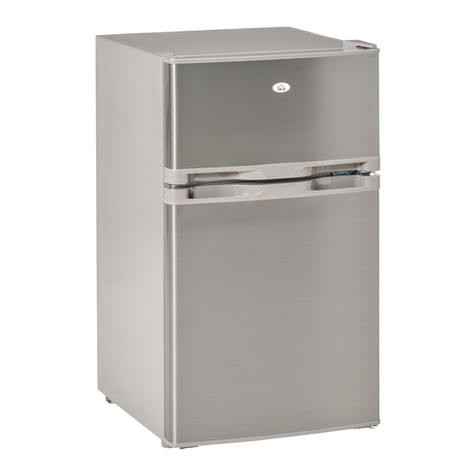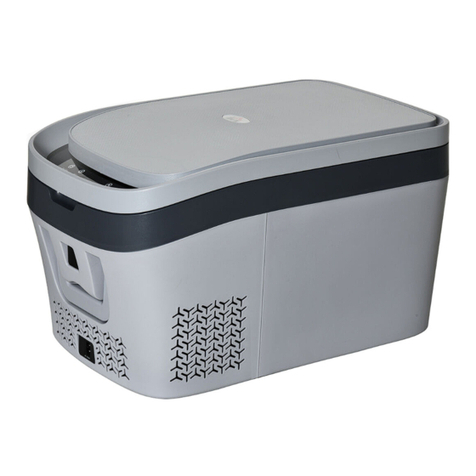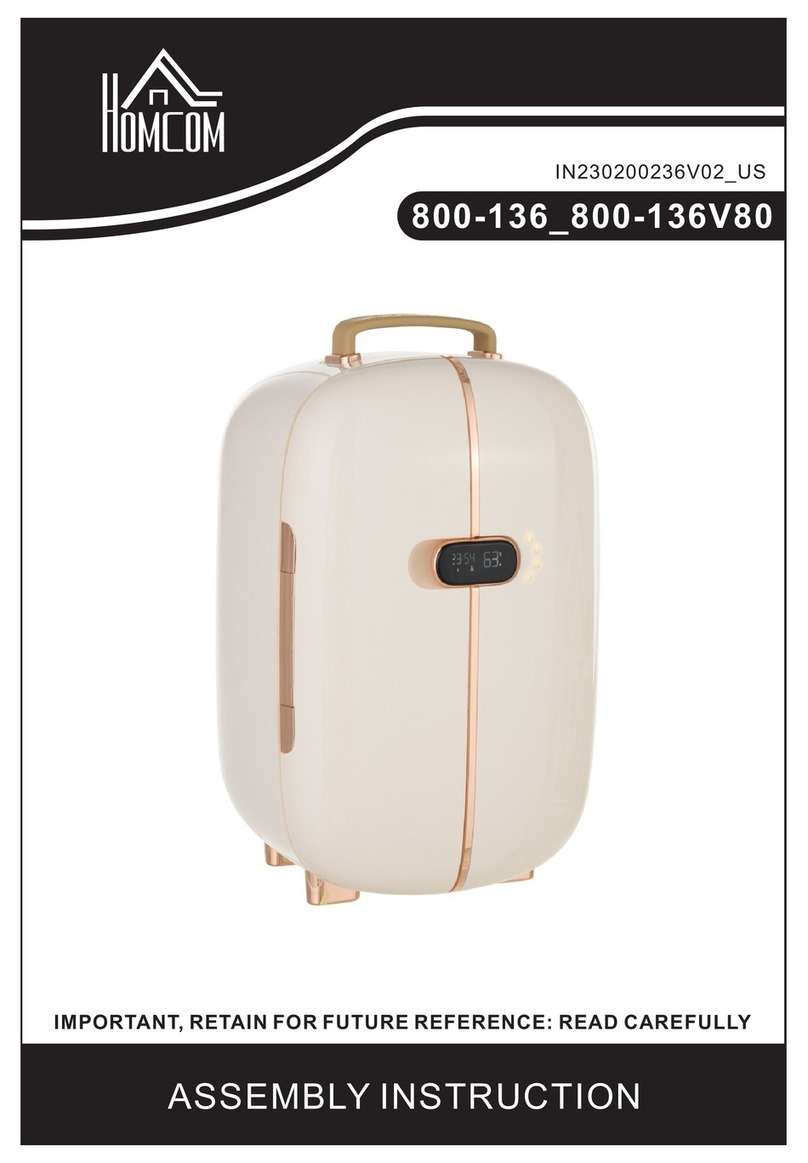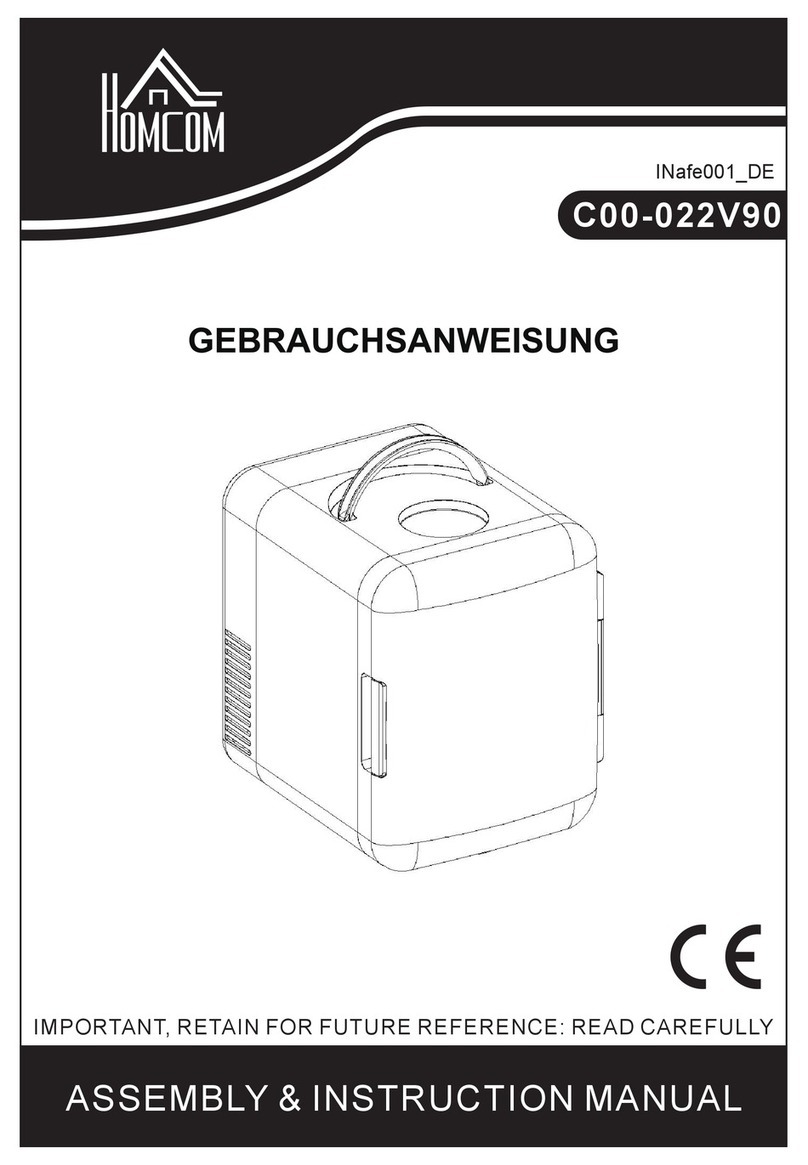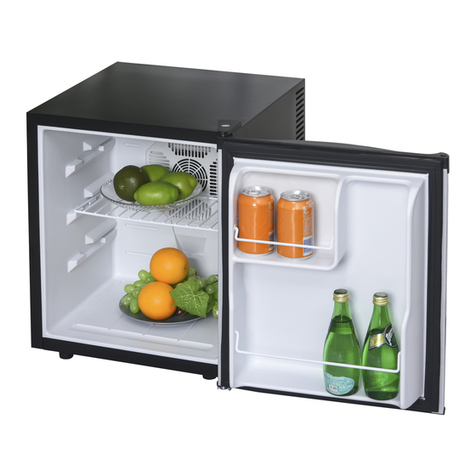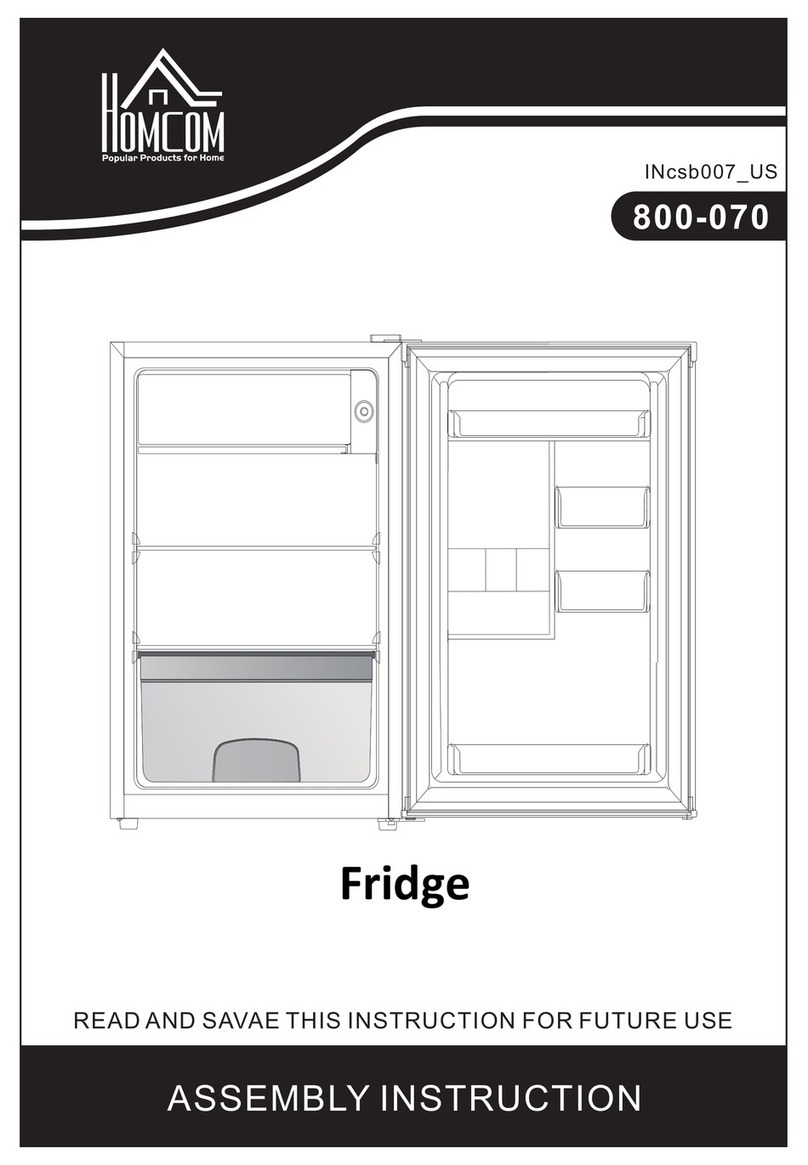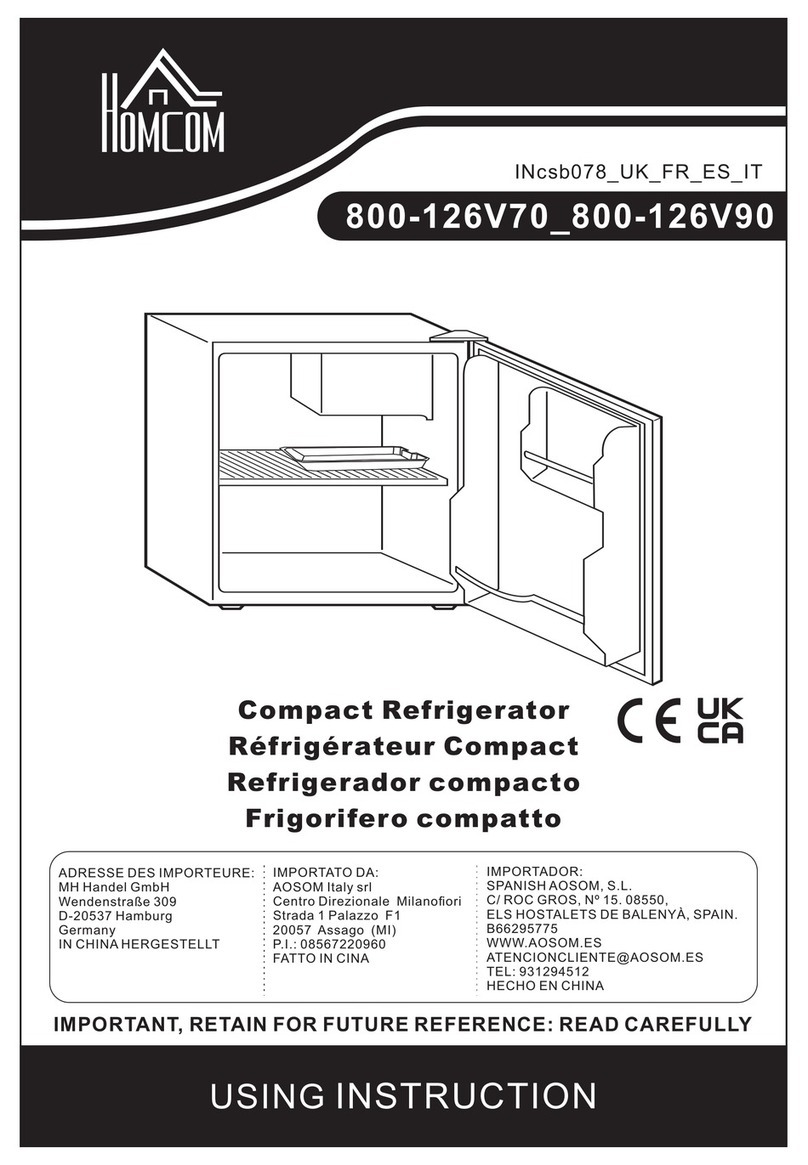
4
- Clean the water tanks if they have not been used for 48 hours; flush the water
system connected to a water supply if it has not been drawn for five days.
- Keep raw meat and fish in suitable containers when stored inside the
refrigerator, so it does not touch or drip onto other food.
- Two-star frozen food compartments are suitable for storing frozen foods, ice
cream and ice cubes.
- One, two and three-star compartments are not suitable for freezing fresh
food.
- If empty for long periods, switch off, defrost, clean and dry the appliance,
then leave the door open to prevent mould developing inside.
14. When not in use, before cleaning and when putting on or taking off parts,
ensure the appliance is unplugged.
15. Ensure the appliance is firmly plugged in when using.
16. Insert the plug into a single grounded socket.
17. Never use the appliance near combustible and inflammable materials.
18. Repairs and replacements to the appliance must be done at an authorised
service centre.
19. The motor is permanently lubricated and does not require oil.
20. Ensure the plug is accessible when positioning the appliance.
21. The refrigerant used in the appliance and insulation materials require
special disposal procedures. Ensure that none of the pipes on the back of
the unit are damaged prior to disposal. When disposing of an old unit,
break off any old locks or latches and remove the doors as a safeguard.
22. To clean the appliance, only use mild detergents or glass-cleaning
products. Never use harsh detergents or solvents.
23. It is not recommended to use this refrigerator with an extension cord or
power board. Please ensure that the appliance is plugged directly into the
electrical outlet.
24. Wait for hot food or drink to cool to room temperature before placing into
the refrigerator.
25. Close the door immediately after placing items inside the refrigerator,
ensuring the temperature does not rise dramatically.
26. Keep the appliance away from all heat sources and direct sunlight.
27. Place the appliance on a flat and solid surface - do not place on top of soft
materials.
28. Do not place items on top of the appliance, and ensure the refrigerator
does not get wet.
29. To avoid electric shock, never use the appliance with wet hands, while
standing on wet surfaces or standing in water.
30. Never use outdoors or in wet conditions.
31. When unplugging the unit, do not pull on the cord - grasp the plug when
removing from the socket.
32. Keep the cord away from heated surfaces.

